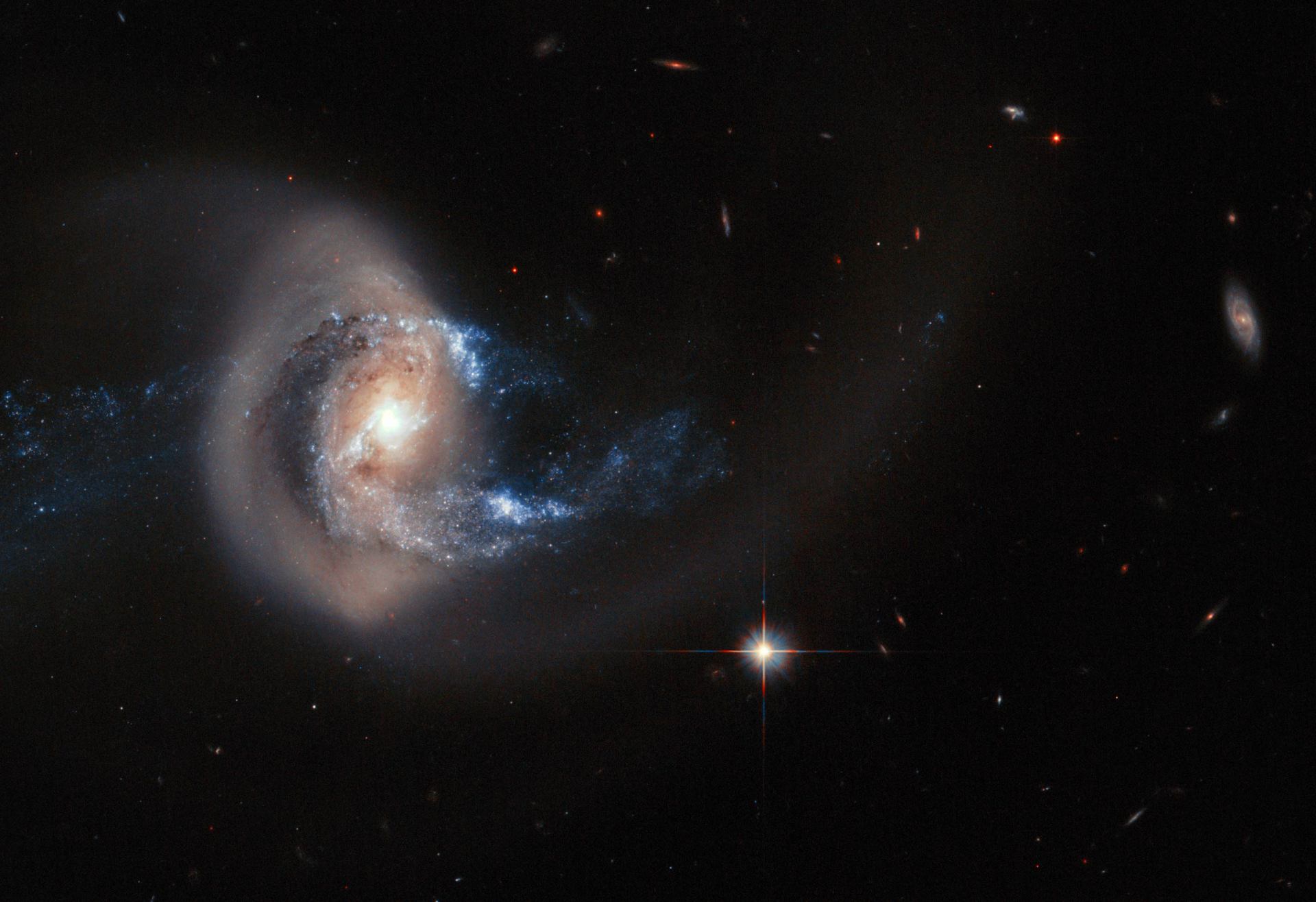Hubble constantly discovers galaxies located very far from us
Hubble's fascinating observations have shown that the NGC 7714 galaxy is in a state of crisis.
Between 100–200 million years ago, when dinosaurs roamed the earth, NGC 7714 passed very close to another galaxy NGC 7715. Extreme gravitational forces pulled one of its (once elegant) spiral arms deep into intergalactic space. Scattered stars at the moment represent a “bridge” to the second galaxy, exchanging material forming stars.

')
Both galaxies are about 100 million light-years away from Earth.
This powerful galactic collision was not the biggest challenge for NGC 7714, however. The collision caused destruction in interstellar gases, causing a wave of new star formation throughout the galactic spirals. The wave of stellar birth was filmed by Hubble’s bright blue optics.
Because of the fierce birth of new stars, astronomers call NGC 7714 as Wolf-Rayet (a star-forming galaxy).
Many young, big stars in the Wolf-Rayet galaxy are very hot, noisy stars that literally burn out and die young. They lose huge amounts of superheated gases before turning into supernovae.

Thus, what began as a powerful galactic collision ended up as a madness of star birth, which ultimately causes Wolf-Reyets to explode, forming NGC 7714 with heavier elements that will continue to form other stars and, ultimately score, star systems.
Photos of galaxies shot at Hubble
Spiral galaxy:

Spiral:

M81:

Triple Galaxy:

Classic Spiral:

Famous galaxy:

Sexual Spiral Galaxy:

Between 100–200 million years ago, when dinosaurs roamed the earth, NGC 7714 passed very close to another galaxy NGC 7715. Extreme gravitational forces pulled one of its (once elegant) spiral arms deep into intergalactic space. Scattered stars at the moment represent a “bridge” to the second galaxy, exchanging material forming stars.

')
Both galaxies are about 100 million light-years away from Earth.
This powerful galactic collision was not the biggest challenge for NGC 7714, however. The collision caused destruction in interstellar gases, causing a wave of new star formation throughout the galactic spirals. The wave of stellar birth was filmed by Hubble’s bright blue optics.
Because of the fierce birth of new stars, astronomers call NGC 7714 as Wolf-Rayet (a star-forming galaxy).
Many young, big stars in the Wolf-Rayet galaxy are very hot, noisy stars that literally burn out and die young. They lose huge amounts of superheated gases before turning into supernovae.

This image from a digitized sky survey shows the galaxy NGC 7714 and its surroundings. This galaxy is in the process of merging with its neighbor NGC 7715, which is also visible in this wide field. Together, they both form an Arp 284 merging pair.
Thus, what began as a powerful galactic collision ended up as a madness of star birth, which ultimately causes Wolf-Reyets to explode, forming NGC 7714 with heavier elements that will continue to form other stars and, ultimately score, star systems.
Photos of galaxies shot at Hubble
Spiral galaxy:

Spiral:

M81:

Triple Galaxy:

Classic Spiral:

Famous galaxy:

Sexual Spiral Galaxy:

Source: https://habr.com/ru/post/376121/
All Articles